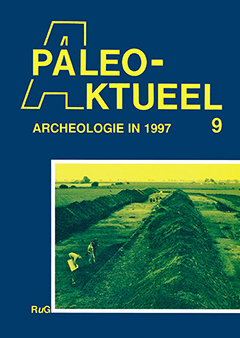HELLENISTISCHE MUNTVONDSTEN UIT NIEUW HALOS
Samenvatting
The investigation of the Southeast Gate of Hellenistic Halos (Thessaly, Greece) was continued in 1997. In the period from 22 May until 1 August a group of 22 archaeologists, students and technicians from the Netherlands, Greece and other countries excavated the destruction and habitation layers on and around the gate. After the excavation campaigns of 1995 and 1997 it is clear that the remains of the gate complex were inhabited after the town and the gate were destroyed by an earthquake in 265 BC. Coin finds indicate that the occupants of the gate complex relied on the bronze emissions of the Macedonian kings: no fewer than 25 out of 77 coins were of the Athena/Pan type, struck by Antigonas II Gonatas. In the previous period, before the destruction of the town, the citizens of Halos struck their own coins and maintained contacts with neighbouring cities and the cities on the island of Euboia. For the time being, we assume that the gate complex was inhabited during the period 265-245 BC, because coins of Antigonos II Gonatas ofthe Heracles/Horseman type and worn and countermarked specimens of the Athena/Pan type were not found.

